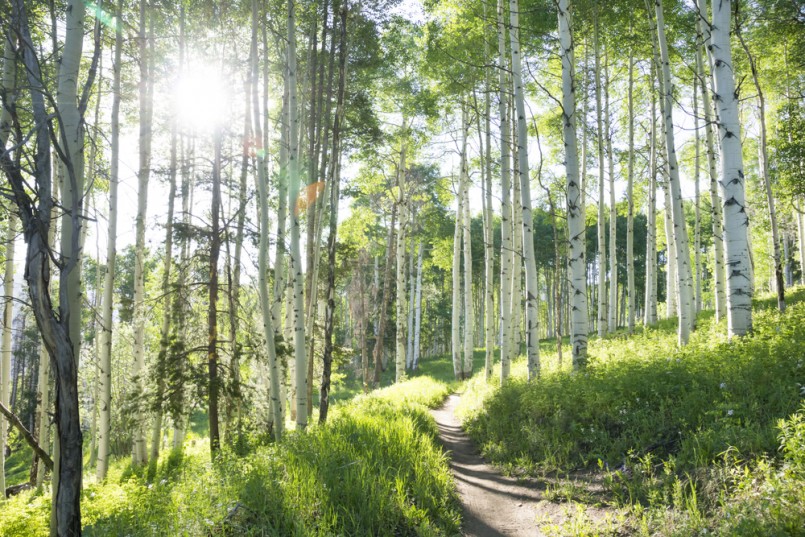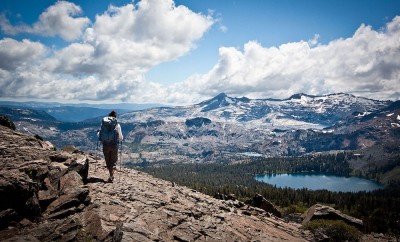Hiking & Treking
Iconic Colorado hikes to trek before you die

Image: Shutterstock/Ricardo Reitmeyer
We all know Colorado is notorious for it’s epic mountainous hikes, but where should you begin? New to the geography of Colorado? Ready to jump in full force with a day hike or backpacking trip? You’re in luck, as the state has thousands of trails to choose from. Here is a list of some of the most iconic hikes from around the state. Whether you’re in the mood to scale sand dunes, summit a few 14ers, or simply day-trip from the city, there are plenty of Colorado hikes for you to enjoy.
Here are our favorite Colorado hikes you must add to your bucket list.
Devil’s Thumb Pass/Lake
Experience a unique array of Colorado wilderness as you make your way towards Devil’s Thumb Lake on the Hessie Trail. While there are many ways to access the lake, Hessie is consistently ranked the most enjoyable route. At a strenuous 10.9 miles, it’s a killer day hike for those in enough shape to handle it. If not, grab a permit, spend two days, and take it slow. Either way, the alpine views, blossoming wildflowers (in summer), and the glistening lake are an outstanding adventure. Keep in mind there’s a bit of route finding, scrambling, and meadow-crossing, so come prepared for an adventure! Find the trailhead a half mile away from the Hessie Parking Area. Signs point you in the right direction!
High Dune
Although there aren’t any specific Colorado hikes outlined in the sandy portion of Great Sand Dunes National Park, venturing through the overwhelmingly large dunes is a one-of-a-kind experience. There are five dunes within the park that reach 700 feet tall, which are the perfect destinations to reach. High Dune is a favorite due to its large appearance from the parking lot, even though it’s not the tallest. Either way, the summit has panoramic views of the entire dunefield and only takes two hours roundtrip to complete. You can also continue on from High Dune towards Star Dune, which is the tallest dune in North America. It’s advisable to hike around the park either in the morning or evening to avoid above-100 degree temperatures. Bring plenty of water no matter when you choose to hike!
Mt. Ida
Without a doubt one of the best Colorado hikes in Rocky Mountain National Park, Mt. Ida keeps hikers coming back for more. The shining aspect of this hike is the view of the Continental Divide from the summit, which reaches an astonishing 12,889 feet. In fact, the trailhead even rests at 10,759 feet! You’re in for a high-elevation trek with this one, so be sure to come prepared. The 9.6 mile round trip hike begins at the Poudre Lake Trailhead on Milner Pass only 4.2 miles from the Alpine Visitor Center. While the mileage and elevation gain seem manageable, please note that most of the trail is above treeline and left completely exposed to the elements. It’s recommended to start early and get back below treeline before afternoon storms roll in.
Chicago Basin
Every adventurer in southwest Colorado has their own story about hiking Chicago Basin. Whether they began from the Purgatory Trailhead on US 550 or took the Durango & Silverton Narrow Gauge Railroad Train halfway to Needleton, there’s never a dull way to complete this quintessential Weminuche Wilderness hike. The appeal of Chicago Basin is the tight cluster of three 14ers (peaks over 14,000 feet), called Mt. Eolus, Windom Peak, and Sunlight Peak. Not only can you summit all three in one trip, you can also stop for a chilling swim in Twin Lakes and make friends with urine-obsessed mountain goats. A key feature of the hike is the notorious catwalk one must traverse in order to reach the summit of Mt. Eolus. With insanely steep dropoffs on either side, only a true daredevil will go through with it!
Hanging Lake
The hike to Hanging Lake is short, but considered very strenuous. Fortunately, the hard work has serious payoff when you come across this National Natural Landmark formed by a geological fault that resulted in the lakebed to sink away from the valley above. Hanging Lake is astonishingly turquoise from its walls of limestone travertine, layered over millions of years. To reach this slice of serene paradise within Deadhorse Canyon, park at either No Name or Bair Ranch rest areas then hike along the Glen Canyon Recreation Path and Colorado River until you find the trailhead. As the ecosystem surrounding Hanging Lake is extremely delicate, please refrain from off-trail treks and swimming in the lake. The oils from human skin has the potential to dissolve travertine by adjusting its pH, which is completely detrimental to the fragile ecosystem. Let’s do everything we can to keep Hanging Lake around for as long as possible!
Ute Canyon Trail
The best way to explore Colorado National Monument is by day-tripping or slowly backpacking the Ute Canyon Trail. At 8 miles round-trip, you have the option of returning at mile 4 or continuing onto Liberty Cap or Wildwood Trails to see more of the park. After a quick 515 foot descent within the first half mile, the trail evens out on the canyon floor below. The unimproved, but clearly marked route takes hikers through steep walls of red sandstone, desert shrubs, and abundant wildlife. And if there’s time, only .9 miles into the Liberty Cap Trail it’s possible to see a 160 year old lithified (turned to stone over time) sand dune near the north canyon wall.
Let us know in the comments which of the Colorado hikes you love or plan to visit.





0 comments